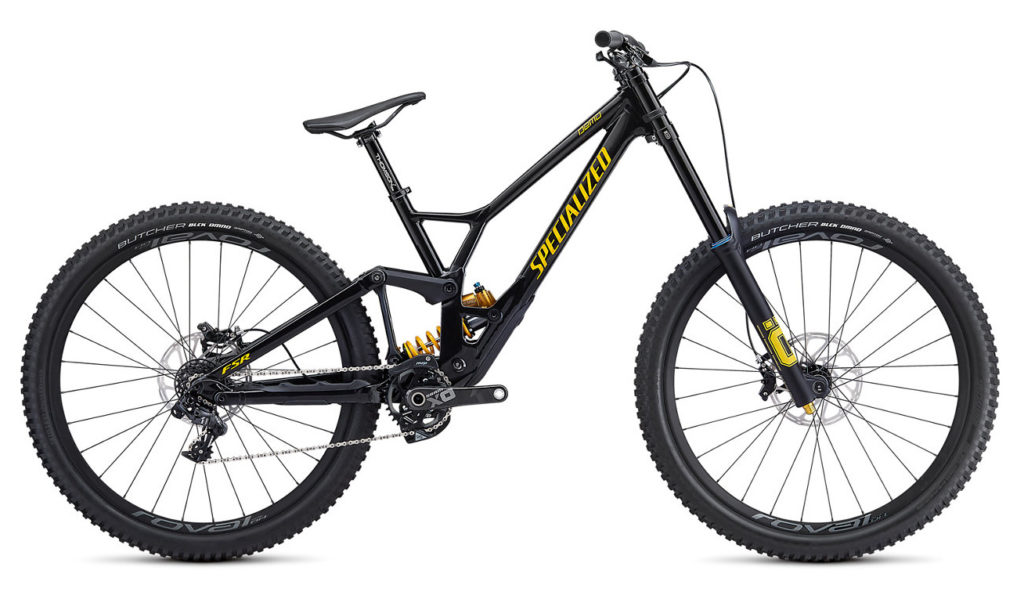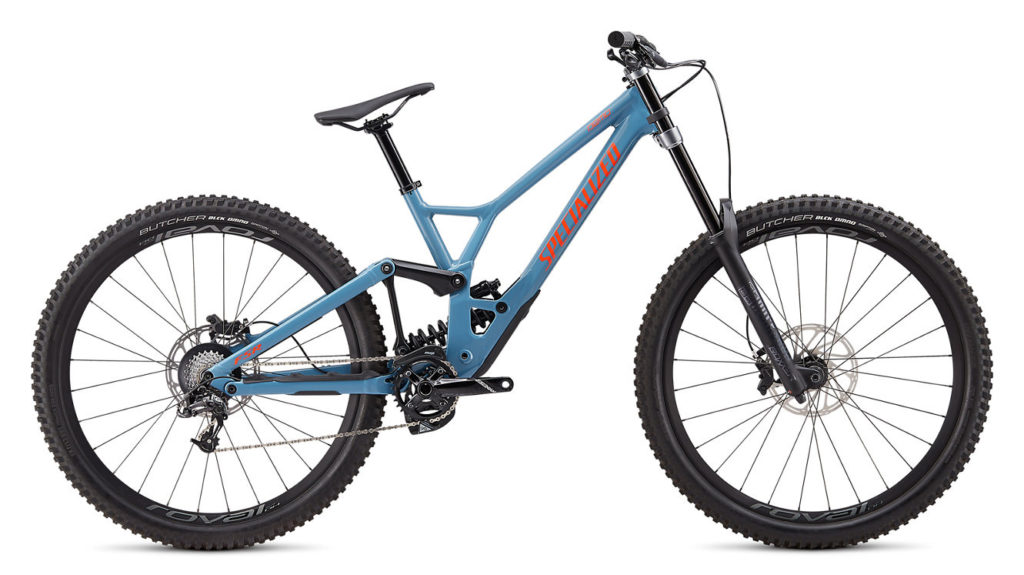Specialized Demo 29 – 2020
Specalized presenta la Demo 29 da DH in alluminio
[COMUNICATO STAMPA]
 Velocità. È così che si vince. È semplice. Rendere ancora più veloce la bici più veloce? Non è così semplice. La Demo 8 già ci ha regalto molti podi in Coppa del Mondo e ai Campionati del Mondo. Quindi come si può migliorare tutto questo? Riprogetti ogni centimetro della bestia per spremere delle prestazioni e un efficienza della sospensione ancora migliore. Ecco dunque la Specialized Demo 29 – una bici già vittoriosa al suo debutto a Maribor, per poi vincere prontamente in una prova di Coppa del Mondo. Ed ha appena iniziato. Un nuovo telaio, una nuova geometria e una cinematica completamente rivoluzionata. A tutto gas. A tutta velocità.
Velocità. È così che si vince. È semplice. Rendere ancora più veloce la bici più veloce? Non è così semplice. La Demo 8 già ci ha regalto molti podi in Coppa del Mondo e ai Campionati del Mondo. Quindi come si può migliorare tutto questo? Riprogetti ogni centimetro della bestia per spremere delle prestazioni e un efficienza della sospensione ancora migliore. Ecco dunque la Specialized Demo 29 – una bici già vittoriosa al suo debutto a Maribor, per poi vincere prontamente in una prova di Coppa del Mondo. Ed ha appena iniziato. Un nuovo telaio, una nuova geometria e una cinematica completamente rivoluzionata. A tutto gas. A tutta velocità.
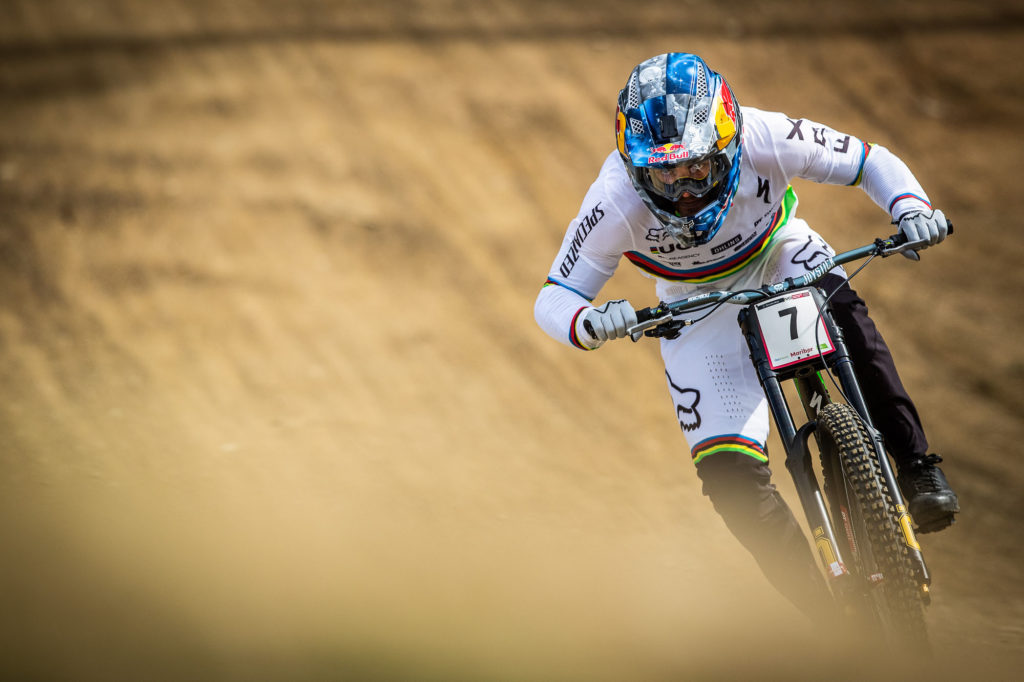 Meno interruzioni. Più velocità
Meno interruzioni. Più velocità
Impatti contro ostacoli spigolosi ti rallentano perché causano una momentanea interruzione del movimento. L’impatto che dovrebbe venire assorbito dalla sospensione, viene, invece, trasferito a te. Prendi un colpo e rallenti.
 Creando una traiettoria dell’asse posteriore negativa, riduciamo il rallentamento della ruota posteriore. Velocità istantanea.
Creando una traiettoria dell’asse posteriore negativa, riduciamo il rallentamento della ruota posteriore. Velocità istantanea.
Maggiore controllo in frenata
Immaginati; stai azionando i freni, il peso in avanti e la tua ruota posteriore perde trazione proprio quando hai bisogno di rimanere basso, centrale e di avere il controllo. Abbiamo previsto il giusto grado di anti-rise nella Demo, cosicché, se ti servisse frenare velocemente, rimani stabile mantenendo il controllo.
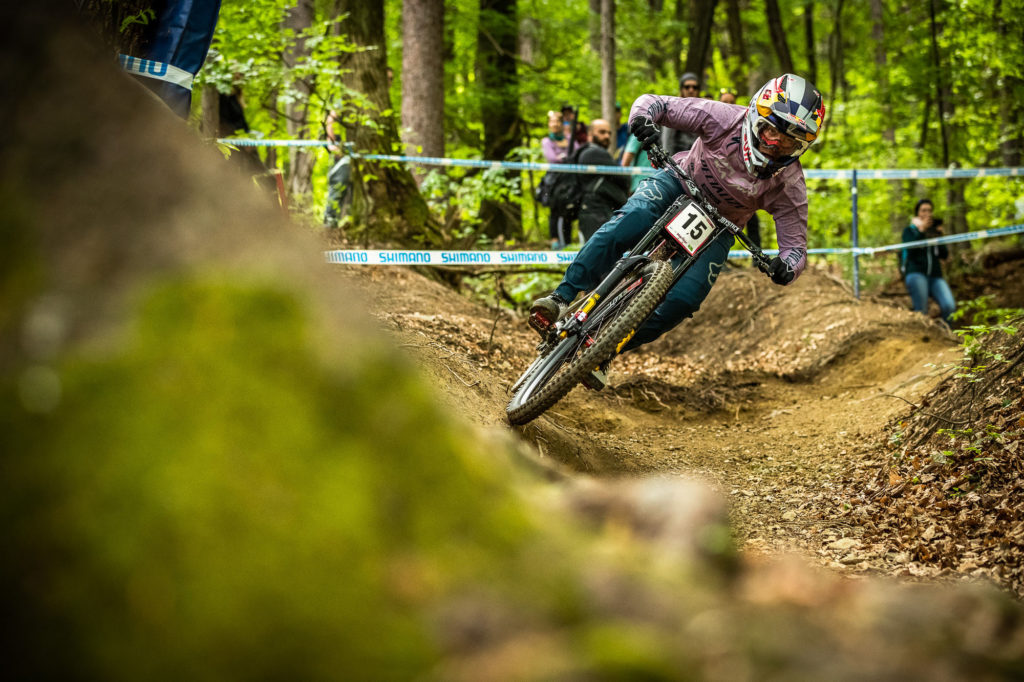 Design guidato dagli atleti più veloci al mondo
Design guidato dagli atleti più veloci al mondo
Se le gare si possono vincere o perdere per frazioni di secondo, i bikers diventano precisini se si tratta delle loro bici. Questo spiega perché abbiamo speso anni nelle prove sul campo dei prototipi e nel laboratorio R&D.
 Potrebbe sembrare eccessivo, ma se nel team di R&D hai alcuni trai gli atleti migliori sul pianeta, tu ascolti. La sanno lunga, la sanno veloce.
Potrebbe sembrare eccessivo, ma se nel team di R&D hai alcuni trai gli atleti migliori sul pianeta, tu ascolti. La sanno lunga, la sanno veloce.
Ancora più veloce nelle sezioni pedalate
La Demo 29 converte ogni watt impresso sui pedali in velocità. La nuova cinematica della Demo permette la giusta quantità di anti-squat. O per essere più precisi, tu pesti sui pedali e la nuova Demo si lancia in avanti. Niente ondeggiamenti, niente rallentamenti.
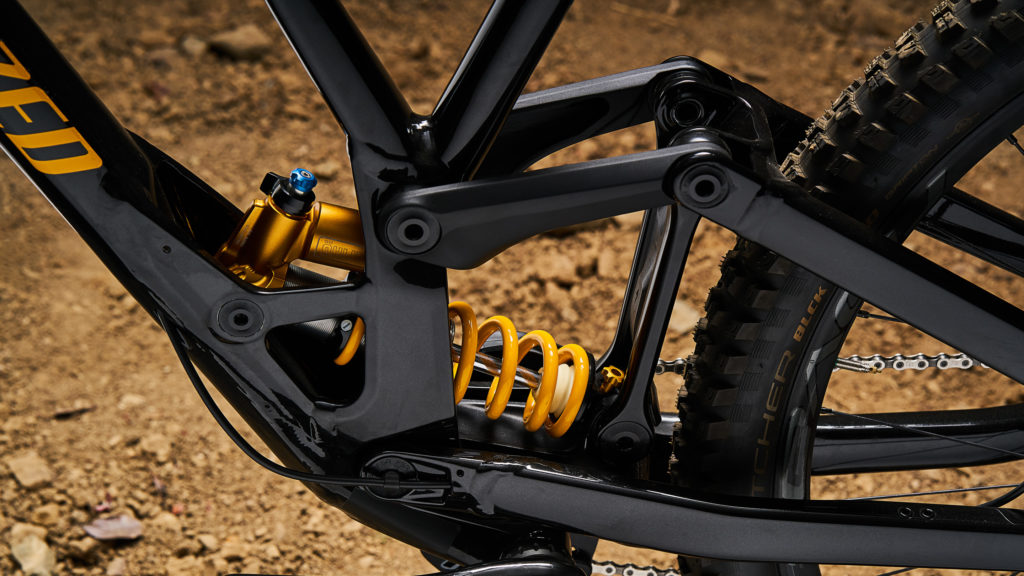 Stabilità e confidenza
Stabilità e confidenza
Stare bassi, significa andare veloci. Cioè, un basso centro gravitazionale ti rende più veloce. Il nuovo design del link della Demo 29 posiziona la massa dell’ammortizzatore più in basso ed il più avanzato possibile nel telaio, creando una traiettoria dell’asse posteriore ideale, per una sensazione incredibilmente stabile che ispira fiducia.
Sospensione posteriore molto resistente
Il nuovo design del link non solo sposta il peso nella parte bassa del telaio, ci ha anche permesso di isolare l’ammortizzatore dai carichi laterali, riducendo l’affaticamento del materiale. Inoltre l’ammortizzatore con montaggio Trunnion aumenta la durata e la fluidità dell’ammortizzatore stesso.
 Geometria specifica
Geometria specifica
La geometria della Demo 29 è stata disegnata per essere veloce e giocoso. Un tubo sterzo relativamente corto mantiene il manubrio all’altezza corretta. La dimensione ruote è stato inoltre compensato al movimento centrale, tenendola a 350mm per centrare la giusta combinazione di stabilità in curva e altezza da terra.
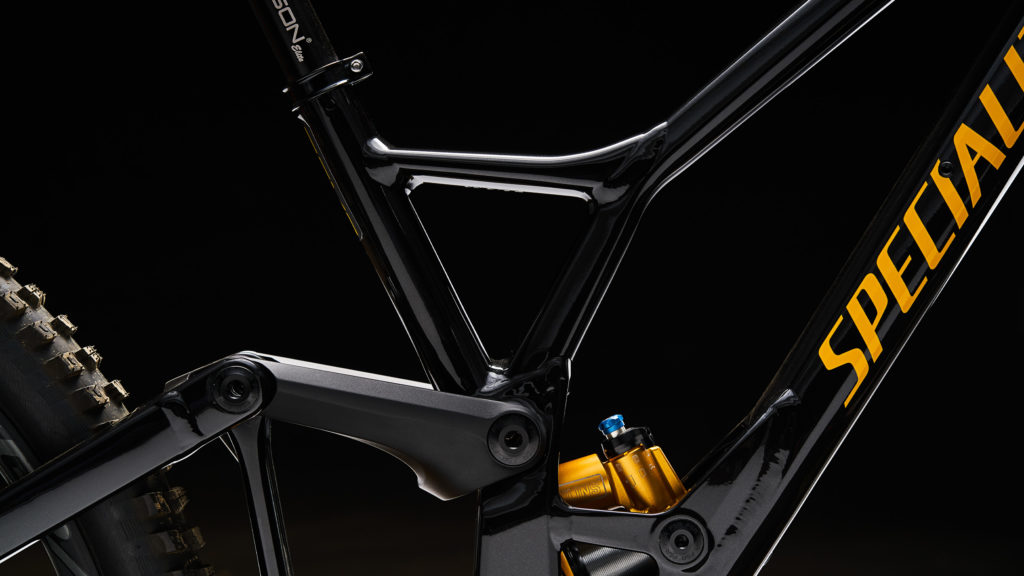 FAQ
FAQ
WHAT WAS SPECIALIZED TRYING TO ACHIEVE WITH THE REDESIGN OF THE DEMO?
Make the bike fast and make it plush. That, for starters, means better momentum carry. Going 29er, therefore, made immediate sense. But it also raised a challenge: It’s harder to get a more rearward axle path with the bigger (29) rear wheel. We also knew we wanted to give the new Demo a more rearward axle path to reduce rear wheel hang up on square-edged hits. You lose momentum, after all, if your rear wheel is hanging up on big hits. We wanted our cake and we wanted to eat it too, and that meant we were in for a significant redesign.
THE NEW DEMO HAS A MORE REARWARD AXLE PATH THAN ITS PREDECESSOR. HOW MUCH MORE REARWARD IS THE AXLE PATH? HOW MANY MILLIMETERS ARE WE TALKING ABOUT HERE?
 HOW EXACTLY DID YOU ACHIEVE THAT MORE REARWARD AXLE PATH?
HOW EXACTLY DID YOU ACHIEVE THAT MORE REARWARD AXLE PATH?
It required a significant change to the Demo’s kinematics. The new main pivot placement was the primary contributor to getting that more rearward axle path, and it also explains the longer chainstays.
IF A “MORE REARWARD AXLE PATH” IS BETTER AT ALLOWING THE REAR WHEEL TO MOVE AWAY FROM—AND THEN OVER—BIG, SQUARE-EDGED HITS, THEN WHY DIDN’T YOU GO EVEN MORE REARWARD?
We weren’t interested in chasing one ride characteristic at the expense of other important ride traits. Or to put a finer point on it—we wanted the right balance. If you go too far rearward, you start getting excessive amounts of chain growth and that, in turn, can give you excessive amounts of pedal kickback…which affects your pedaling performance. If the rear axle is traveling too far rearward on big hits, you also wind up with your geo (wheelbase in particular) changing noticeably and distractingly when you’re in the middle of the most technical sections of a DH track. And while rearward axle paths can feel great on some big hits, they can lead a bike to feel less supple on smaller bumps. So, you gain speed in one section of the track, but you’re slower on other sections of the downhill. We weren’t interested in designing the Demo to be faster on just one section of a DH track—it’s about being faster across the widest range of conditions possible. And that means finding the right balance of suspension characteristics.
SOME OF THE PROBLEMS THAT RESULT FROM HAVING TOO REARWARD OF AN AXLE PATH—LIKE IMMENSE AMOUNTS OF CHAIN GROWTH (AND THE RESULTING PEDAL KICKBACK)—CAN BE RESOLVED BY PUTTING AN IDLER PULLEY ON THE BIKE. WHY DIDN’T YOU MAKE THE AXLE PATH EVEN MORE REARWARD AND SIMPLY EQUIP THE DEMO 29 WITH AN IDLER PULLEY?
Idler pulleys can cancel out excessive chain growth, but they do so while introducing other less-awesome traits, like extra friction in the drivetrain. On top of that, while excessive chain growth can be a problem, the right amount of chain growth can help create effective anti-squat and improve pedaling performance, which is a plus any time you have to sprint during a race. Obviously, you can win races with an idler pulley—it’s being done and we’re not going to slag other brands for going that route. Idler pulleys, however, weren’t a direction we wanted to go with the Demo.
YOU SAY YOU BUILT MORE ANTI-RISE INTO THE NEW DEMO. HOW MUCH MORE ANTI-RISE DID YOU ADD TO THE NEW DEMO?
We increased anti-rise on the new Demo by 70%. We spent a lot of time working with Loïc Bruni, and the rest of the team, to dial-in the ideal amount of anti-rise. Loïc, in particular, came to the Demo 8 after competing on a single-pivot bike that featured much more anti-rise than his Demo 8. We always felt that the Demo 8’s low levels of anti-rise contributed to its rear suspension’s great sensitivity. The suspension stayed active when you were on the brakes, and we liked that. The bike did, however, have a tendency to pitch you forward slightly when you grabbed a lot of brake. On steeper tracks, that can be unsettling. You could clearly adjust to that trait and ride fast as hell. Loïc, Gwin, Brosnan, Finn, Miranda Miller, and tons of riders around the world proved that point. That said, working with Loïc, and many other riders, convinced us that we could achieve more of a balance on the Demo when it came to anti-rise. If the rider is adjusting their ride position—shifting rearward when they hits the brakes—that can be less than awesome when you have a 29-inch wheel out back. And as we mentioned earlier, we were interested in improving momentum carry with the bigger rear wheel. Adding more anti-rise to the Demo made sense.
YOU CAN BUILD TOO MUCH ANTI-RISE INTO A BIKE. IF HITTING THE BRAKES SUCKS THE BIKE DOWN DEEPLY INTO ITS TRAVEL, YOU CAN REDUCE THE REAR SUSPENSION’S SENSITIVITY, MAKING THE BIKE FEEL HARSH. WHAT’D YOU DO TO AVOID THAT PITFALL?
Again, it’s a balance. We didn’t go overboard with the anti-rise and that’s why the new Demo feels more planted than before when you’re on the brakes, but also feels smooth when you’re hitting the stoppers in rough sections. The short answer is that we spent a long time working with our riders to find that balance.
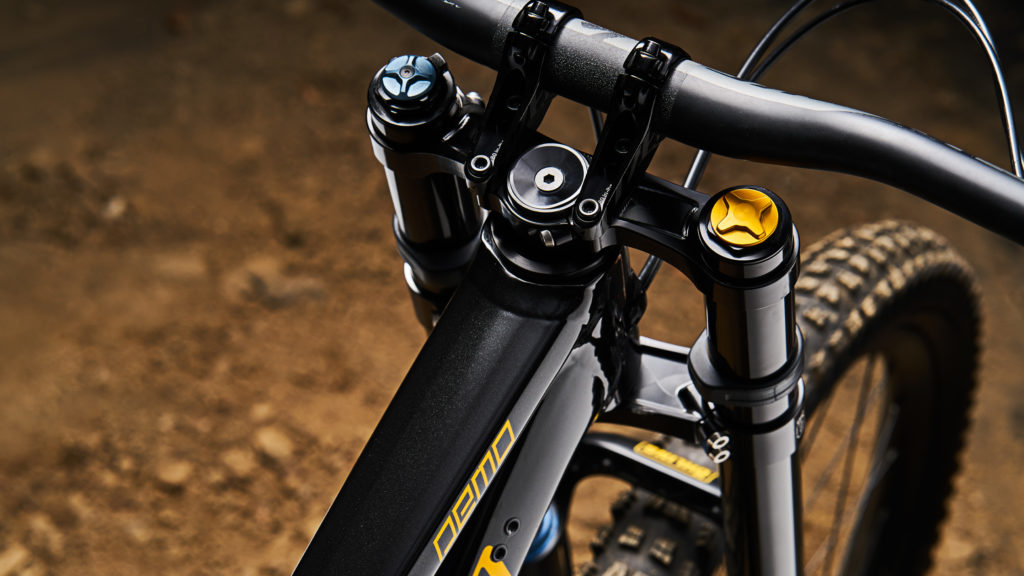 YOU SAY YOU BUILT IN MORE ANTI-SQUAT. HOW MUCH OF A CHANGE ARE WE TALKING ABOUT?
YOU SAY YOU BUILT IN MORE ANTI-SQUAT. HOW MUCH OF A CHANGE ARE WE TALKING ABOUT?
We didn’t initially go chasing anti-squat (that is, attempting to get more of it) when we set out to design the new Demo. That said, since anti-squat is affected by a host of factors, including instant center, rear axle path, and chain forces, we wound up with a higher anti-squat value in this new Demo than was ever featured in its predecessors. Anti-squat increased (Demo 8 to the new Demo 29) by about 300%. The feedback from the team was unanimous—they liked how the increased antisquat improved the Demo’s pedaling performance.
WHAT ABOUT THE LEVERAGE CURVE ON THE NEW DEMO? HAS IT CHANGED?
The leverage curve is more progressive now. We spent years testing custom links on the Demo 8 (first with Gwin and later with Loïc), which brought us to the conclusion that the Demo could be improved with increased bottom-out control.
 WHY 29-INCH WHEELS?
WHY 29-INCH WHEELS?
Big wheels better maintain their momentum in rough sections than smaller wheels. Go, Science.
YOU’RE RELEASING THE NEW DEMO WITH 29-INCH WHEELS FRONT AND REAR, BUT YOUR DH TEAM IS RACING THE BIKE WITH A 27.5 REAR WHEEL. WHAT’S THE STORY THERE?
When we developed the new Demo, the UCI rules required that riders race on equalsized wheels. Because, you know, UCI…. That wheel size ruling changed recently and, as a result, you’re seeing teams (including our own) experiment with different wheel size combinations on different tracks. You can get farther off the back on really steep tracks with a smaller rear wheel. You can get less hang up over fast, open, and rough sections with bigger wheels.
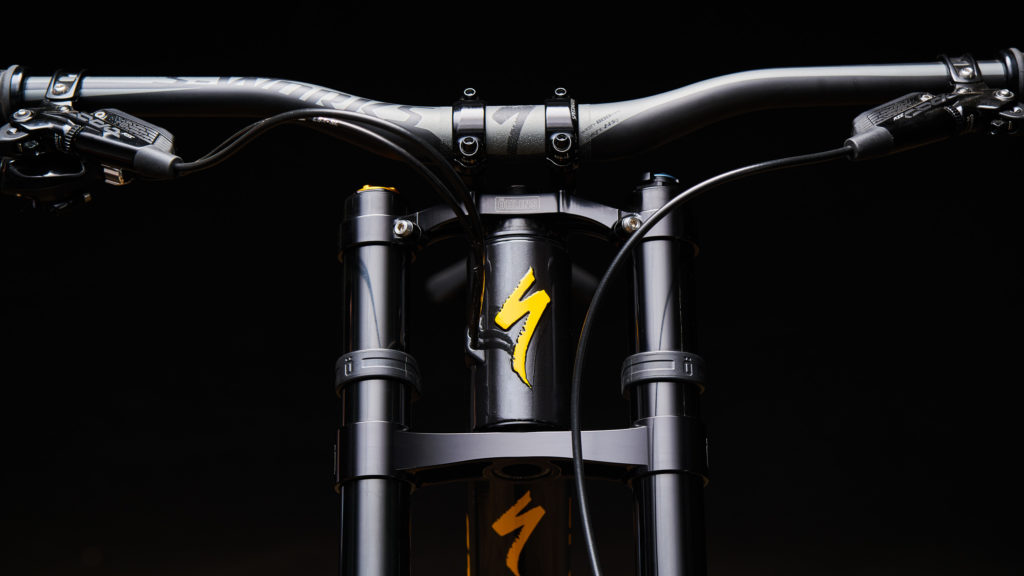 ARE YOU GOING TO OFFER THE DEMO WITH A 27.5 REAR WHEEL OR OFFER A KIT THAT LETS PEOPLE RUN THE BIKE BOTH WAYS?
ARE YOU GOING TO OFFER THE DEMO WITH A 27.5 REAR WHEEL OR OFFER A KIT THAT LETS PEOPLE RUN THE BIKE BOTH WAYS?
We’ll see. Our goal was to create the fastest DH bike possible and that meant going full 29. Given the new UCI ruling, we’re working with our team to test the split (29/27.5) wheel size configuration. The Demo’s design has always been shaped by racing. We’ll see what the season and the future holds. The Demo will always evolve
HOW DID THE GEOMETRY CHANGE COMPARE TO THE PREVIOUS VERSION?
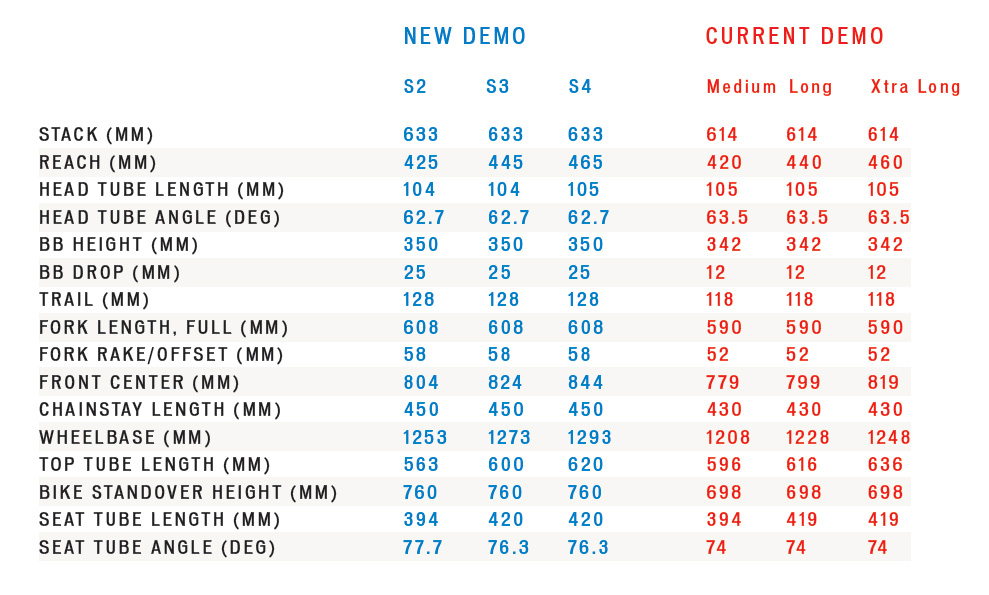 WHAT WERE YOU AIMING TO ACHIEVE WITH THE GEO CHANGE?
WHAT WERE YOU AIMING TO ACHIEVE WITH THE GEO CHANGE?
We’re constantly trying to achieve more rider comfort at even higher speeds, and we’re doing that, while taking into consideration, how DH tracks around the world are evolving. So, for starters, we slightly increased the reach. Working with a trail number we were comfortable with, we relaxed the head angle slightly and worked with Öhlins on the proper offset for the crowns. We tested a wide range of offsets—all the way from high 40s to low 60s. Ultimately, we found maximum traction, control, and comfort with a 58-millimeter offset. We increased stack height a bit, after paying close attention to rider setup, and the constant search for comfort on modern race tracks. Taking the Demo’s new ride characteristics into account, we also raised the bottom bracket slightly. The goal was to balance the bike’s ability to corner, yet not hit pedals in pedaling sections of DH tracks. The rear-end has grown 20mm. Twenty-nine-inch wheels, and our team’s demand for high-speed stability and great cornering traction, had an impact
on that.
THIS THING IS ALUMINUM. WHY ISN’T THERE A CARBON DEMO 29?
We build the Demo for the world’s fastest racers. Demo is our platform for innovation, and that means it’s undergoing constant development as our riders try to squeeze out every possible bit of speed. The Demo is R&D in motion, and that means you can expect it to evolve throughout the season. Alloy gives us that flexibility to weld different variations and constantly tweak and refine.
Allestimenti e prezzi
Per informazioni: specialized.com

